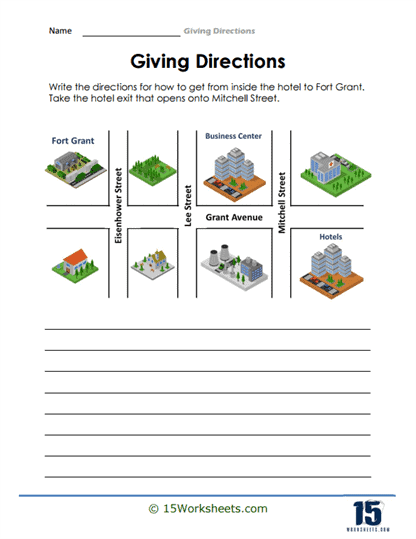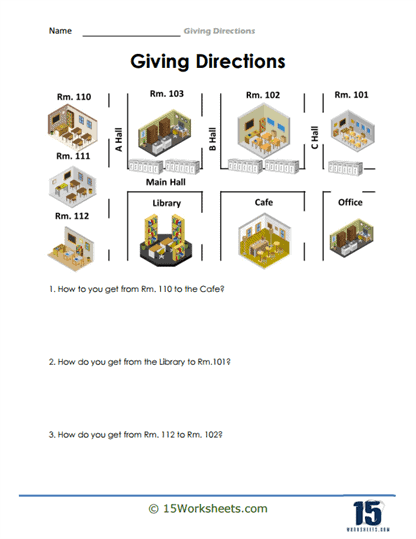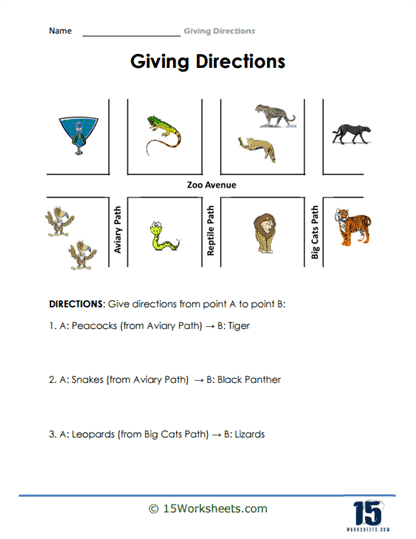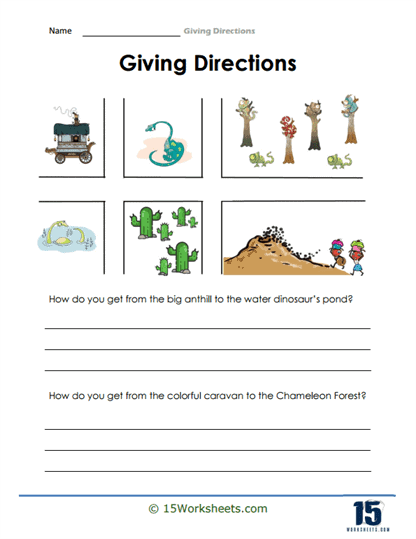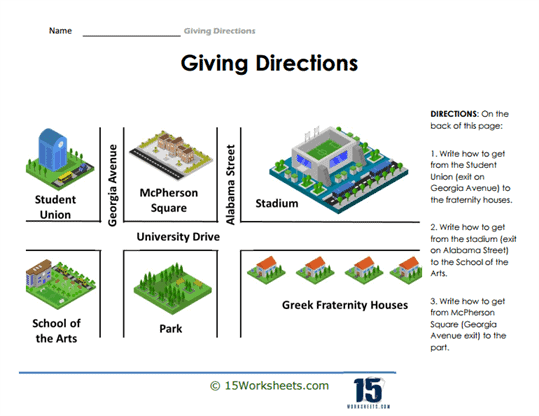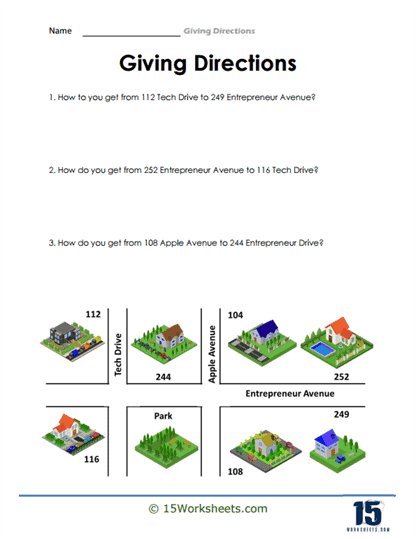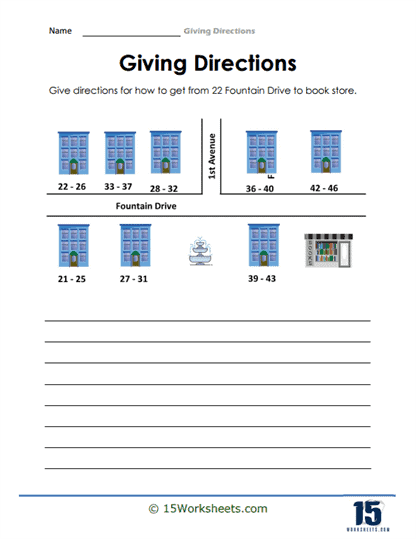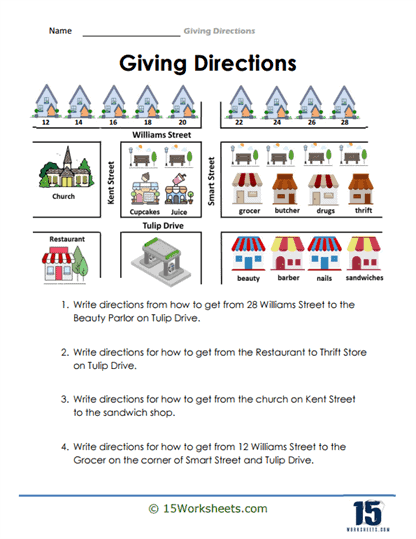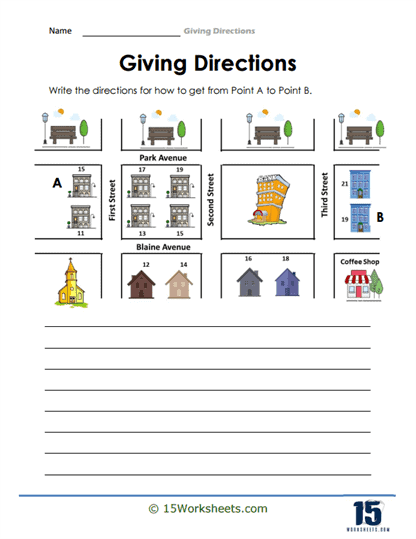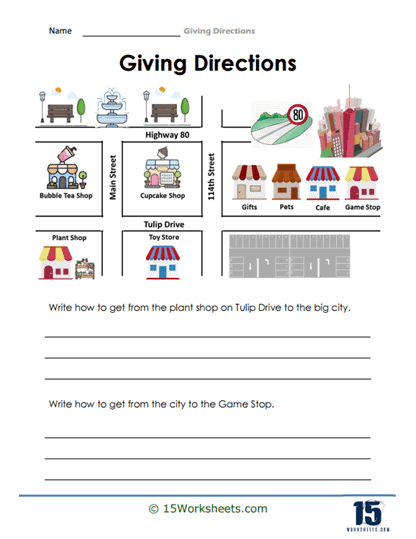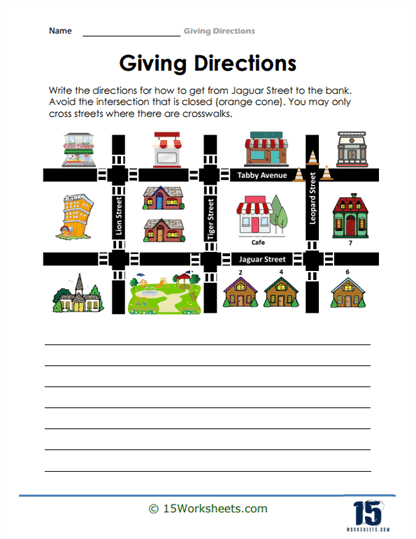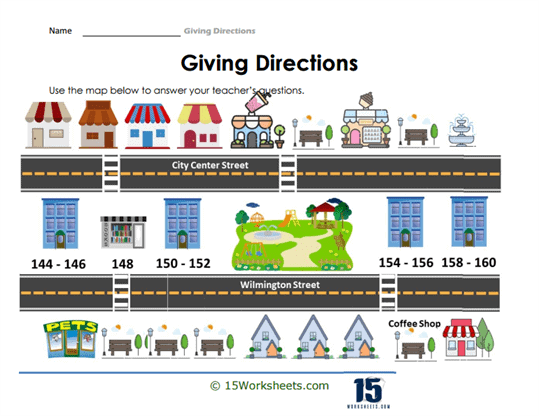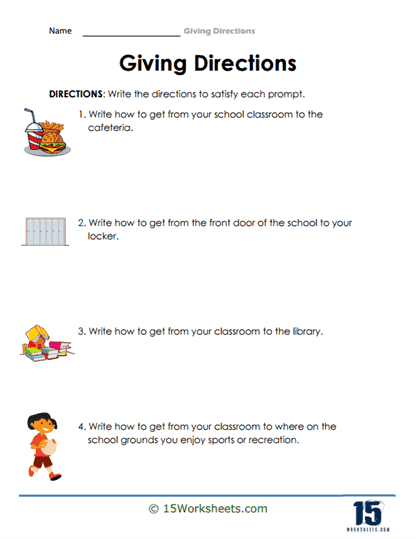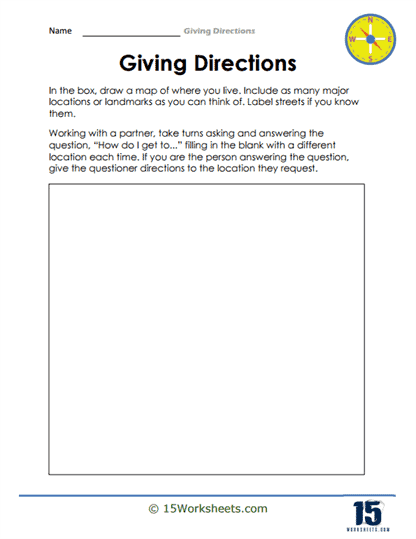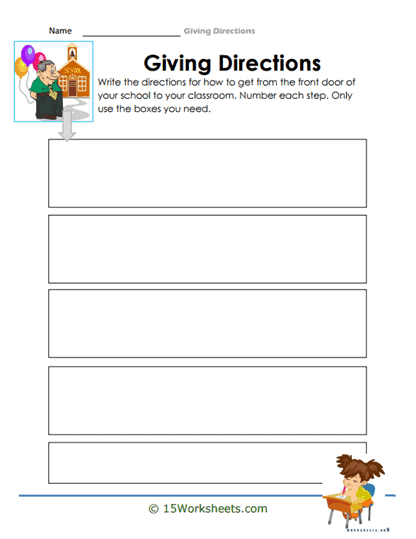Giving Directions Worksheets
All About These 15 Worksheets
This series of 15 worksheets focuses on helping students develop their skills in giving clear and effective directions. The exercises provide a step-by-step approach to guide students in expressing directions accurately and concisely, enabling them to communicate navigational instructions with clarity and precision. By mastering the art of giving directions, students enhance their communication skills and become adept at providing guidance in various contexts. Through these worksheets, students will:
- Use visual maps as guides in giving out the correct directions to go from one point to another;
- Draw a map of the area where they live, including as much detail as they can;
- Understand why precise instructions are essential for effective communication;
- Recognize important landmarks, street names, and directional cues;
- Avoid ambiguity, use descriptive words, and provide accurate distance and location information;
- Learn to provide step-by-step instructions and ensure a coherent flow;
- And learn to use diagrams, maps, and visual aids to enhance clarity.
Overall, this series of worksheets equips students with the skills to give clear and effective directions. By emphasizing the importance of clear language, logical sequencing, and adaptability, these worksheets empower students to communicate navigational instructions with confidence. Through practice and application of these skills, they develop strong communication abilities, enabling them to guide others effectively in various contexts.
How To Make Your Directions Easy to Follow
Whether you are giving your preschoolers directions in English about how to do their homework, or you need to give the directions to the mall to a non-English speaker, it is extremely important that you know how to sound as clear and coherent as possible.
When preparing written directions consider the following:
Use logical order – Present your directions in a step-by-step manner, starting with the first step and moving chronologically through the process. Ensure that each step follows logically from the previous one.
Break down complex steps – If a step is complicated or has multiple parts, break it down into smaller sub-steps to make it easier for the reader to follow.
Use numbers or bullet points – Organize your directions using numbers or bullet points to make it visually clear that each item represents a separate step or piece of information.
Be specific – Provide exact details, measurements, or locations when necessary to prevent confusion. For example, instead of saying “turn left after a while,” say “turn left after 1 mile.”
Include visual aids – If possible, incorporate diagrams, illustrations, or photographs to help clarify your directions. Visual aids can make it easier for readers to understand complex instructions or visualize the end result.
Use consistent terminology – Stick to the same terms throughout your directions to avoid confusion. For example, if you refer to an item as a “screw” in one step, don’t call it a “bolt” in another step.
Provide context – Explain the purpose or goal of each step to help the reader understand why it’s necessary and how it contributes to the overall process.
Anticipate potential problems – Address any common issues or questions that may arise during the process, and provide solutions or alternatives when necessary.
Test your directions – Before sharing your directions, test them yourself or have someone else follow them to ensure they are easy to understand and complete. This will help you identify any ambiguities or missing information that needs to be addressed.
When speaking directions to others consider:
Speak a Little More Loudly than Usual
Someone who does not know English well will not understand your directions if you speak in your regular low tone. They may be able to hear a few words; however, they might mishear something or make a mistake when following your directions.
Hence, in order to ensure that the other person is able to understand every detail of your directions with maximum clarity, try to speak a little louder than usual. Moreover, while speaking loudly, it is important that your tone remains gentle and helpful to ensure the listening individual does not get intimidated and even more confused than before.
Try to Pronounce Each Word with Clarity
Different English accents can sound very different to both native as well as non-native English speakers. For instance, if you speak in a Scottish accent, chances are the listener may struggle even more while understanding the directions you are giving out to them.
While you cannot change your accent, you can certainly work on pronouncing words in a way the listener may understand you better.
Use Your Body Language and Offer Helpful Gestures
One of the best tips you can use when giving directions in English to someone who does not know English that well is to involve your whole body to use body language and helpful hand gestures for a better understanding.
While different verbal languages sound completely different from one another, body language is usually universal. For instance, if you need someone to walk down the street and then take a left to catch the bus, you can use the fingers of one hand to replicate the action of walking while using the other hand to signal which direction the listener has to walk down to.
Then you can once again turn your whole body to the left while pointing in that direction so that the person knows they need to turn left after walking down the street.
Use Basic English Vocabulary
Since your listener already has little understanding of English, there is no need to confuse them further by using more complicated words. Instead, focus on using the most basic form of English vocabulary and try to stick to speaking in short phrases.
Repeat Yourself
Lastly, but most importantly, try to repeat all the directions a couple of times to help better understand and more lasting memory retention.

